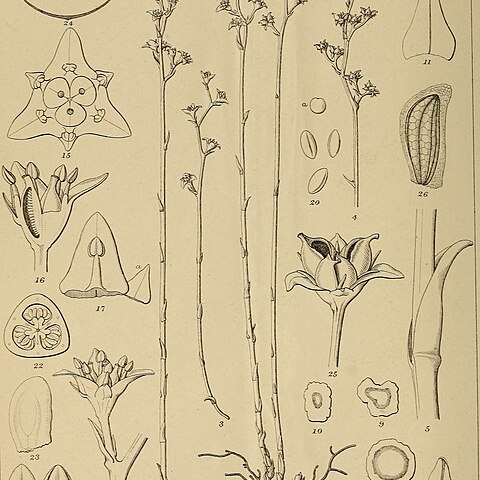Aerial stems (5-)10-21(-27) cm high. Scale-leaves of rhizome ovate, c. 2-5 mm long, their base amplexicaul, often forming a closed sheath. Scale-leaves of aerial stem narrowing gradually to the acute apex, 4-6 mm long, their base partly embracing the stem or rarely completely amplexicaul. Raceme simple or with few-flowered branches towards the base, elongate, with (3-)6-25(-30) flowers. Pedicels of mature flowers usually at least 2 mm apart, 3-8 mm. Outer perianth segments ovate to lanceolate, acute, 1.5-2 by 0.5-1 mm. Inner perianth segments ovate, ± acute, 2-3 by 1.25-1¾ mm. Filaments c. 2 mm; anthers less than 0.5 mm long. Ovary superior to semi-inferior; styles up to 1 mm. Capsule segments 2-3 mm long. Seeds c. 0.75 mm long.

